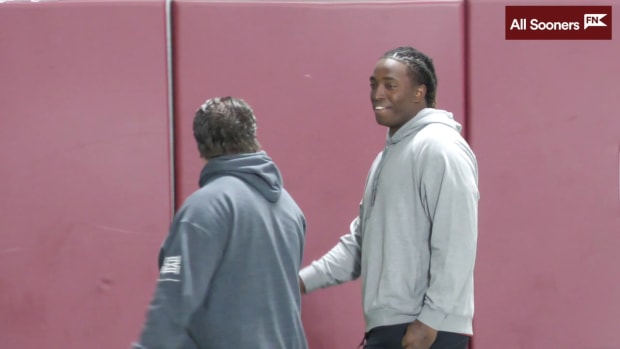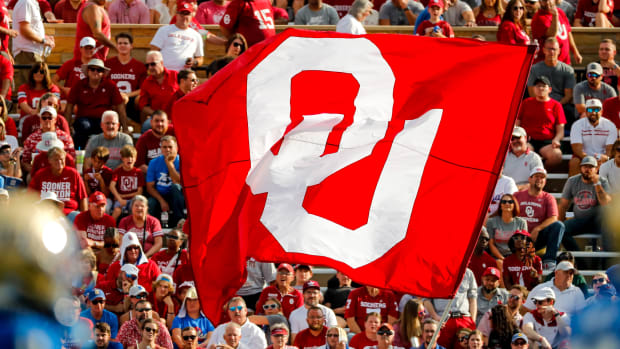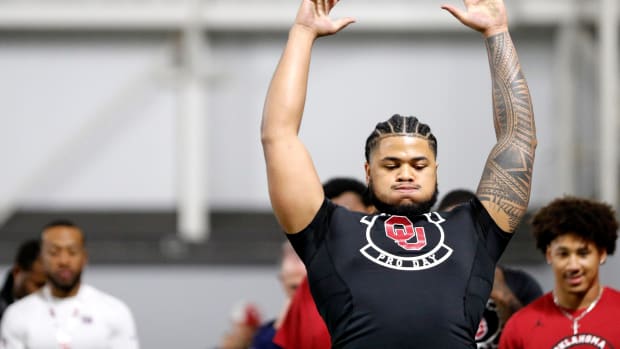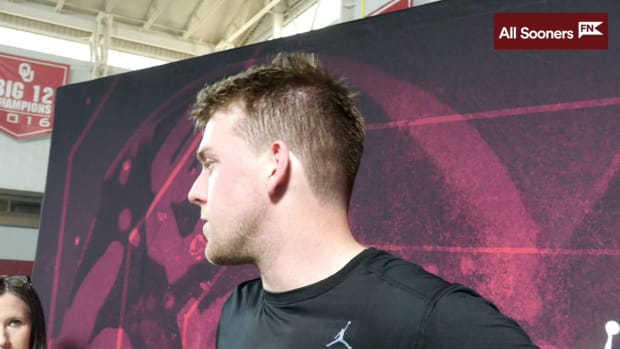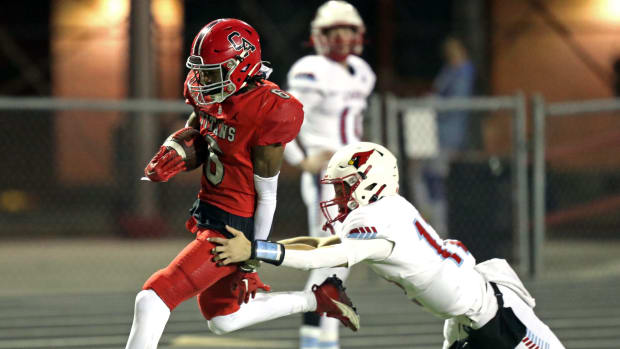For Oklahoma, Joining the SEC Wasn't About Opportunity, it was About Survival
OKLAHOMA CITY — Oklahoma president Joe Harroz has been with the university longer than OU has been a member of the Big 12 Conference.
That’s why he offered such extensive background information Friday during a special meeting of the OU Board of Regents for why the Sooners have decided to leave the Big 12 and join up with the Southeastern Conference.
He started with the 2010-2012 shift in membership — losing Nebraska, Colorado, Missouri and Texas A&M, and gaining West Virginia and TCU — and then hit fast forward.
“OU took time and thought about whether or not we should make a conference change at that time,” Harroz said. “There was much discussion, and much activity around it in the media. In the end we decided to stay at that time in 2012 in the Big 12 Conference.
“So the question is, what's changed? What's changed between 2012 and today. And the answer is everything.”
Harroz referenced four specific time periods, and began with 2012-16 — the rebuilt Big 12’s early days of strength, after the league agreed to a binding grant of media rights that fortified the conference’s long-term viability through television contracts with ESPN and Fox Sports.
“During that time period, everything seemed terrific — and it was,” Harroz said. “During that time period, as compared to every other broadcast out there, live sports were doing better. Because during that time, we saw the emergence of the first DVRs, called TiVo for some of us that were back then. During that time period, every conference was doing better. Every conference was prospering.”
That’s when the demand for televised sports began to evolve. Streaming entered the lexicon. Big 12 Commissioner Bob Bowlsby said at the time the future of sports on TV was simply unknowable.
Then came the second time frame Harroz said: the ever-changing landscape in college athletics, which really began to speed up during a time period he identified between 2016 and 2018.
“During that time here, things begin to change,” he said. “We see, for the first time, the emergence of Name, Image and Likeness. That comes on the scene. We've seen the rise of antitrust lawsuits. And this challenge to whether or not the NCAA can limit the amount that goes to a student who initially (receive) scholarships, and then it rose to Cost of Attendance and … the idea of all education related expenses and what could those be.”
Harroz said the third time period that forced OU to look around happened between 2018 and this past May. That’s when other conference showed increased revenue and the Big 12 did not. It’s also when TV networks told the league they weren’t interested in beginning early renegotiations for a new TV deal.
“During that time period,” Harroz said, “it became clear that the Big 12 was the last in line for meeting and negotiations — not just as between among all of the Power 5 conferences, the autonomous five, but among all of those with the major broadcasters in live sports — the NFL, the NHL, all those. And the last in line has consequences.”
Harroz said some of those consequences included being stuck with 11 a.m. kickoffs.
“It translates to disadvantages in recruiting the top talent disadvantages for our student athletes and a detriment to the fan experience,” Harroz said. “ … We also saw Name, Image and Likeness legislation not just starting moving forward in Congress, moving forward among the states, and also discussions about how name image and likeness is handled at the NCAA level.
“Further, during the same time here, we see antitrust cases decided in the lower courts against the NCAA, against its ability to regulate the way it always has over the 115-year history of that organization. What we see is the importance of conferences growing, because of these changes in the ability of the NCAA to continue to regulate the way they have, called into fundamental question.”
Harroz also cited the “COVID impact” on OU’s decision before the final decisive time period of June.
“It was seismic,” Harroz said. “The gathering storms over that time period that we laid out finally burst.”
Foremost was the United States Supreme Court’s decision that ruled the NCAA can’t restrict student-athletes’ education-related expenses.
“A 9-0 decision,” Harroz said. “A unanimous, United States Supreme Court decision comes down in June that finds against the NCAA … calling into question, through the antitrust laws, the future of the NCAA being able to regulate the way it has.”
Through all that, OU surmised, the true power in collegiate athletics now rests not with the NCAA, but with the individual conferences. And no conference wields more power than the SEC.
“The importance of the conference you're in, and it being the one that best fits the institution's abilities and needs in this uncertain landscape, are greater than us. So what’s change since 2012? Everything's changed.”
The question OU asked in 2012, Harroz said, was ”is there an opportunity here for us?”
Opportunity isn’t the concern today.
“The question today,” Harroz concluded, “is potentially existential.”
Want to join the discussion? Click here to become a member of the AllSooners message board community today!
Sign up for your premium membership to AllSooners.com today, and get access to the entire Fan Nation premium network!
Follow AllSooners on Twitter to stay up to date on all the latest OU news.
